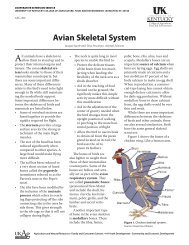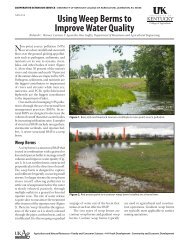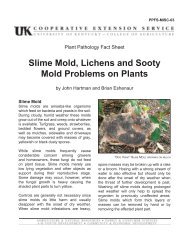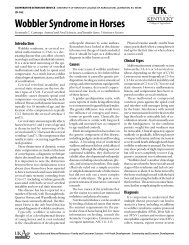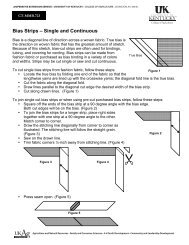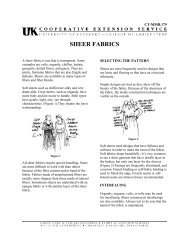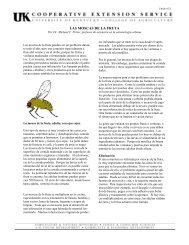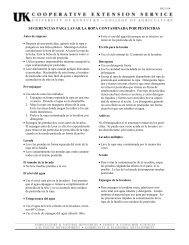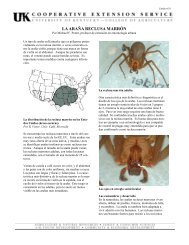Chapter 3 - CHICKEN ANATOMY AND PHYSIOLOGY
Chapter 3 - CHICKEN ANATOMY AND PHYSIOLOGY
Chapter 3 - CHICKEN ANATOMY AND PHYSIOLOGY
Create successful ePaper yourself
Turn your PDF publications into a flip-book with our unique Google optimized e-Paper software.
Broilers subject to high environmental temperatures exhibit many behavioral changes<br />
which allow them to re-establish heat balance with their surrounds. They tend to rest<br />
more or will position themselves close to walls or waterers. They spread their wings<br />
away from the body to promote cooling by reducing body insulation. Within the bird,<br />
blood is diverted from certain internal body organs such as the liver, kidneys and<br />
intestines to dilated blood vessels of the peripheral tissue (i.e., skin) in order to facilitate<br />
heat loss.<br />
As ambient air temperatures increase past 85°F, chickens respond by trying to loose<br />
more heat through evaporative cooling which is accomplished by panting. However, this<br />
process also generates more heat through the muscular activity involved in panting.<br />
Normally blood pH is controlled by the lungs and kidneys along with the various buffer<br />
systems which prevent rapid changes in the pH. As the respiratory rate increases in heat<br />
stressed broilers, however, there is also a corresponding decrease in the levels of blood<br />
carbon dioxide. Respiratory alkalosis (i.e., elevated blood pH) results as the blood<br />
acid-base balance is disrupted. This produces a decrease in blood calcium and<br />
bicarbonate which are necessary for the production of strong egg shells. Thus, the<br />
ultimate problem with broiler breeders is a production of thin-shelled eggs produced by<br />
laying hens. As for growing chickens, heat stress affects them by depressing weight gain<br />
mainly because feed intake is depressed.<br />
H. Nervous system<br />
The nervous system is divided into two main parts which are the central nervous<br />
system (CNS) and the autonomic nervous system (ANS). The CNS is responsible for<br />
the voluntary actions of the body such as movement of flight, and the ANS is responsible<br />
for the coordination of involuntary actions of the organs, intestines, blood vessels and<br />
glands. The primary function of the nervous system is to integrate the functions of the<br />
body.<br />
Electrical stunning, using a water bath stunner, is the most common method employed<br />
to slaughter poultry under commercial conditions. The purpose of electrical stunning is to<br />
induce insensibility in order to perform humane neck cutting and to avoid recovery of<br />
consciousness and wing flapping during bleeding. The basic principle involved in<br />
electrical stunning is that an electrical current is passed through the brain to induce<br />
epilepsy. The occurrence of grand mal epilepsy is considered to be an indicator of the<br />
state of unconsciousness (based on the human analogy).<br />
Controlled Atmosphere Killing (CAK) is an alternative method for slaughtering poultry.<br />
It involves placing the chickens in a container in which the atmosphere lacks oxygen and<br />
is made up of argon and/or nitrogen and/or CO2. The result is that the chickens loose<br />
consciousness. Argon and nitrogen are important components of a painless gassing<br />
process as using CO2 seems to cause distress. The respiratory system has CO2<br />
detectors and high levels of CO2 will rest in a fighting response in chickens – typically<br />
wing flapping – which can result in increased wing damage. There are no such receptors<br />
for argon or nitrogen.<br />
3.20



